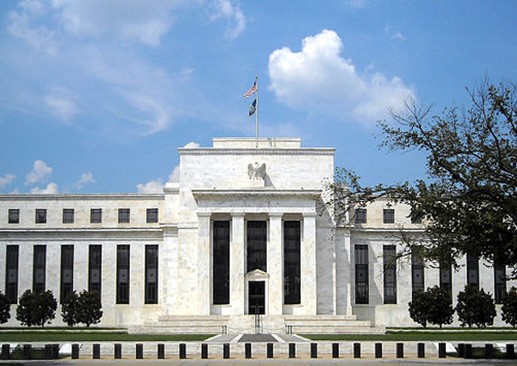The Federal Reserve System, Part One
History, Purpose and Structure
The Federal Reserve System is a quasi-government body that impacts the lives of every citizen each day, yet most people do not understand what they do or how they do it. This post, along with it’s follow-on part two, will explain the Federal Reserve’s mission and how they act on it, as well as why it matters in your reporting.
One cautionary note: The Federal Reserve System is extremely complicated, so further reading and research is advised after getting the basics here.
History of the Federal Reserve
The Federal Reserve Act was passed into law in 1913 in an effort to stabilize the American economy. The Federal Reserve, widely referred to as “The Fed,” is America’s central bank. Central banks across the globe are responsible for managing the money supply, interest rates and stabilizing financial systems for their given nations. These articles will focus on the Federal Reserve System and how it functions in America.
Purpose of the Federal Reserve
According to the Fed’s website, the bank performs the following functions:
- conducts the nation’s monetary policy
- promotes the stability of the financial system
- promotes the safety and soundness of individual financial institutions
- fosters payment and settlement system safety and efficiency
- promotes consumer protection and community development
Books have been written about each of the five preceding bullet points; monetary policy in itself is an entire field of study with competing ideologies and theories. For our introductory purposes, it’s important to know that the Fed is in charge of the United States Dollar as a currency, and ensuring that business can be conducted in America. The Fed’s “Dual Mandate” is to maximize employment and stabilize prices.
The Fed is often called “The Banker’s Bank” because they offer services to commercial banks in the same way commercial banks offer services to customers like you. For example, commercial banks can take out a loan from the Fed. The Fed is known as the “Lender of Last Resort” because it will offer loans to commercial banks that cannot secure loans from other institutions in the marketplace.
Individual citizens cannot get services from the Fed. The Fed does not print money, but they do disburse physical currency to banks across the country. They also set interest rates that are then attached to the loans given out for mortgages, student loans and car loans by commercial banks.
The Fed even has a responsibility to keep counterfeit money out of circulation. The New York Fed states on their website that they destroy about five million unfit currency notes each day. They also produce economic research and have some oversight responsibilities to the banks they work with. In short, they do a lot. The Federal Reserve System is large, and they have lots of programs of varying sizes to help make the American economy run cohesively and grow sustainably.
Structure
Like all things related to the Fed, the structure is a bit complex. The Federal Reserve System has three parts:
- The Federal Reserve Board of Governors
- 12 Federal Reserve Banks
- Federal Open Market Committee
The Federal Reserve Board of Governors
Located in Washington D.C., The Board of Governors oversees the entire Federal Reserve System. The Board consists of seven members whom are appointed by the President and confirmed by the Senate. These Governors are appointed to 14 year long terms on the Board. The Board is headed by the Chair of the Board. The current Chair of the Fed is Jerome Powell. The Chair and Vice Chair of the Board are appointed to four year terms. The Board is an independent Federal Agency within the United States Government.
12 Federal Reserve Banks
There are 12 regional Federal Reserve Banks located across the country. Each of these 12 banks is independently incorporated and overseen by the Board of Governors in Washington D.C. This is the crux of the Fed’s public-private model. The Board is a government agency that oversees each Bank. The Banks do not receive congressional funding, and all earnings from each bank are transferred directly to the U.S. Treasury. Each of these regional banks has nine people on their boards of directors.
The 12 regional banks carry out the functions of the Fed. They work with banks in their regions, they conduct research and economic analysis, and share this information with the Board. The map below shows the 12 regional banks and their areas of responsibility. Note that these district lines were drawn in 1913.
Source: Federal Reserve website, “About the Federal Reserve System”
The Federal Open Market Committee
This committee, also known as FOMC, is a 12 member body that is made up of current Federal Reserve employees. All seven members of the Board of Governors sit on the FOMC, the President of the Reserve Bank of New York and four other Reserve Bank presidents from the remaining 11 districts. The four additional presidents serve on the FOMC on a rotating basis.
This is a decision making group that is charged with overseeing “open market operations” according to the Fed website. This group actually ends up deciding on a plan that will then be executed by the regional Federal Banks. The FOMC was established in the 1930’s as an amendment to the original Federal Reserve Act.
Additional Readings:
From the Federal Reserve:
Full Text of the Federal Reserve Act and all Amendments
The Federal Reserve: Purpose and Functions
Investopedia, Federal Reserve System










